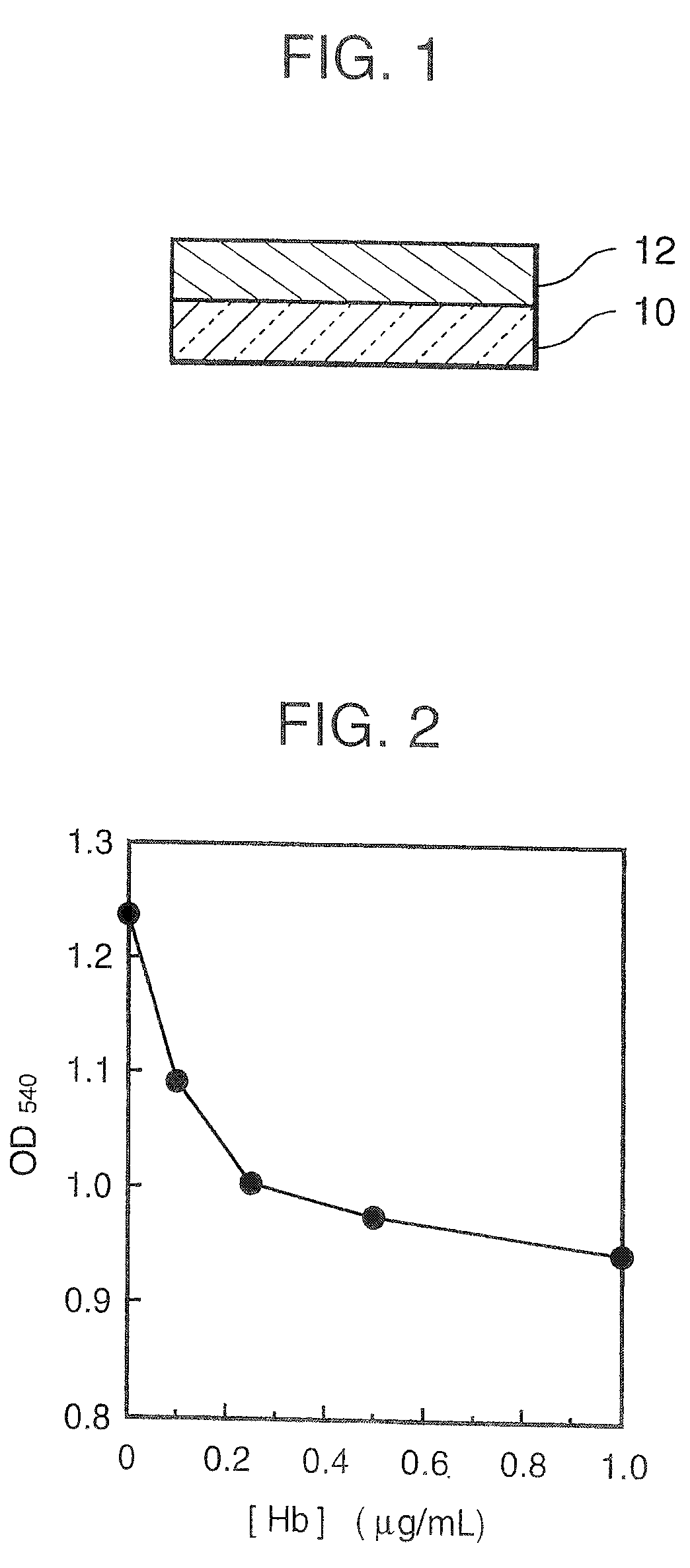Agglutination Assay Method in Porous Medium Layer
a porous medium and assay method technology, applied in the field of trace substance detection and analysis, can solve the problems of poor storage stability, cumbersome operation, latex reagent, etc., and achieve the effects of high sensitive analysis, excellent stability, and simple operation
- Summary
- Abstract
- Description
- Claims
- Application Information
AI Technical Summary
Benefits of technology
Problems solved by technology
Method used
Image
Examples
example 1
Preparation and Evaluation of Dry Analysis Element
[0054] On a colorless transparent smooth and flat polyethylene terephthalate (PET) film (support, thickness: 180 μm) undercoated with gelatin was placed a silk screen (pore size: 200 μm, space between centers of pores: 700 μm), to which an adhesive for office job (starch paste) was then applied by means of the squeeze method, followed by peeling off the screen to form mesh points of the adhesive on the support. Then, thereon was placed a white broad woven cloth made of a polyester which had been previously immersed in 10 mM phosphate buffer (pH 7.2; supplemented with 1.0% bovine serum albumin) at room temperature for 24 hours and dried. The cloth was pressed and adhered by applying slight pressure to form a spreading layer.
[0055] An aqueous solution of the following composition was coated on the spreading layer and dried to form a reagent layer. The respective components had the coverage as set forth below.
example 2
Storage Stability of Dry Analysis Element
[0060] The storage stability of the dry analysis element (slide 1) obtained in Example 1 was examined. A dry analysis element is generally stable at 4° C. for a duration of about 1 year. In this experiment, the elements were stored in a dry incubator set up at 35° C. for 0, 1, 4, 7 days after preparation of the slides as an acceleration test.
[0061] As a comparative example, 250 μg / mL of colloidal gold-labeled anti-human hemoglobin antibody solution (50 mM sodium phosphate, pH 7.0) was prepared and used as a reagent for solution-type agglutination in the comparative example. The solution reagent of the comparative example was stored in an incubator of 35° C. for 0, 1, 4, 7 days after the preparation in a similar manner of the slide 1.
[0062] 100 ng / mL or 500 ng / mL of a human hemoglobin solution (human hemoglobin A0 (Hb) (product of Exocell. INC), 6% polyethylene glycol 6000, 0.2 M ammonium chloride (pH 6.8)) was spotted, in an amount of 20 ...
PUM
| Property | Measurement | Unit |
|---|---|---|
| particle size | aaaaa | aaaaa |
| particle size | aaaaa | aaaaa |
| size | aaaaa | aaaaa |
Abstract
Description
Claims
Application Information
 Login to View More
Login to View More - R&D
- Intellectual Property
- Life Sciences
- Materials
- Tech Scout
- Unparalleled Data Quality
- Higher Quality Content
- 60% Fewer Hallucinations
Browse by: Latest US Patents, China's latest patents, Technical Efficacy Thesaurus, Application Domain, Technology Topic, Popular Technical Reports.
© 2025 PatSnap. All rights reserved.Legal|Privacy policy|Modern Slavery Act Transparency Statement|Sitemap|About US| Contact US: help@patsnap.com

